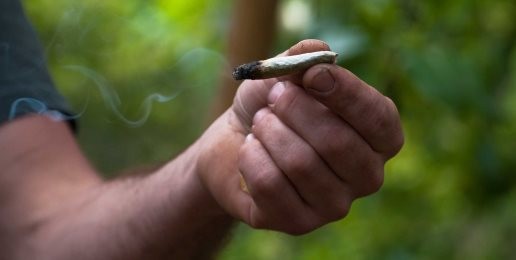
Written by David W. Murray and John P. Walters
President Obama visited Denver this week, was offered marijuana, and laughed. His administration made possible the open marketing and use of marijuana in Colorado and Washington state by directing that federal law not be enforced. The president is joined by Hillary Clinton and Rand Paul in supporting marijuana legalization. As Clinton recently told CNN, “On recreational marijuana, states are the laboratories of democracy. We (are) experimenting with that right now. I want to wait and see what the evidence is.”
There is no indication that Obama is really paying attention to what he has done in Colorado. During our recent visit to the state we found no one is measuring this “experiment” at all. Even more troubling, if this were truly an experiment, the impact of this “laboratory” is on human subjects, many of whom—Colorado adolescents, communities in neighboring states—were hardly approached for “informed consent.” Nor did citizens we talked to vote for what they see happening to them now.
To get the ballot amendment passed, promises were made to the residents of Colorado. The marijuana market would be tightly monitored, and strictly regulated, “from seed to sale.” There were assurances of no underage youth involvement, no blatant advertising to kids, no interstate trafficking, or black-market criminal cartels running operations. All transactions would be regulated, controlled, and assessed.
But none of that “assessing” is actually happening. And as we learned from a first-hand visit to Colorado this month, there is ample, clear, and disturbing evidence that each of those promised conditions is being violated, with impunity.
We learned that legalization has encouraged soaring levels of potency as new forms of the drug have appeared in edible candies, butane-extracted cannabis oils, in vaporizers used at school desks, undetected. The impact on society? Nobody knows, as nobody is measuring.
Are the underage getting the drug in greater numbers? One public school administrator told us that he is attending increasing numbers of private, disciplinary hearings for twelve-year olds who are daily marijuana users. Denver is awash with marijuana that is advertised as having a potency of three times or more the national average—which is already almost three times stronger today than it was in days of Woodstock. Potent, cheap THC gummy bears with hallucinogenic effects are advertised in newspapers, featuring cartoon characters such as Fred Flintstone.
On our visit we met with community leaders, educators, law enforcement personnel, and researchers at the University of Colorado medical center. They are the ones assembling the evidence from the front lines, from schools, hospitals, burn centers, and treatment facilities. A portrait is emerging of considerable, and rising, damage. And yet no comprehensive study is being undertaken. No surveillance, evaluation, or even plotting a trajectory against a prior baseline.
Governor Hickenlooper’s office intends to conduct a “gap analysis,” trying to determine what information is missing in order to conduct a proper study, and whether there are data sufficient to learn anything. But aren’t these steps one takes before you plunge? As one parent put it, “you don’t want to have the only experiment be your own son.” People said that the state was “hurtling forward, with no one driving.” Meanwhile, legalization advocates are already proclaiming that all is well.
The black market thrives. According to the director of the Rocky Mountain trafficking center, “By legalizing marijuana in Colorado, we have become the black market for about 40 other states that we can document. So instead of eliminating it, we have become it. We are also the black market for those under twenty-one.”
Is any of this really unexpected? Dr. Francis Collins, head of the National Institutes of Health, was recently asked about legalization by USA Today. He warned, “We don’t know a lot about the things we wish we did.” Risks of IQ loss? “Perhaps it would be better if, before we plunged into (legalization) there was a little bit more recognition of that particular consequence.” Increased cancer risk? “We don’t know. Nobody’s done that study.”
Advocates rushed right over these gaping holes in our knowledge. Profits beckoned, and surely tax revenue. Well, actually, tax revenues are well below those promised, but the profits—and the costs—are real. What we saw in Colorado has the markings—the steeply rising curve—of a drug use epidemic. Epidemics subside, but after the outbreak, the populace often settles into a new normal, at higher levels of the disease. The damage is difficult to reverse, and of those caught in the outbreak, not all return. Are other states going to follow this leap?
If the president believes that there is some important medical and societal “experiment” going on with legal marijuana, he is simply not paying attention. The evidence to date is stunning. It is time to stop pretending otherwise.
This article was first published in The Weekly Standard.
John P. Walters and David W. Murray of Hudson Institute, direct its Center for Substance Abuse Policy Research. They both served in the Office of National Drug Control Policy.





























